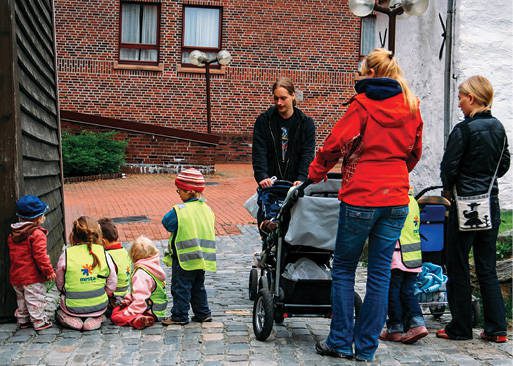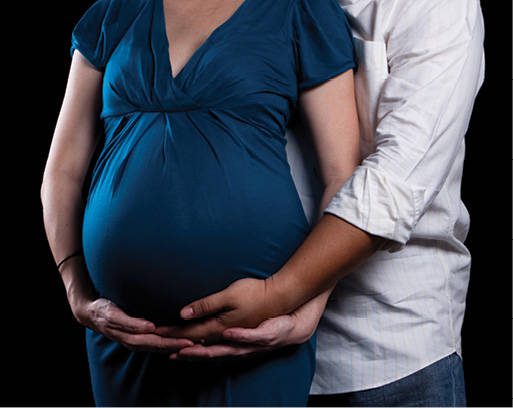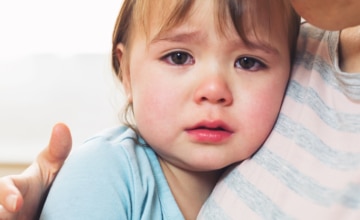Catarina Furmark, Region Norrbotten, Luleå, Sweden
Nina Sanner, Innlandet Hospital Trust, Elverum, Norway

Abstract
The DC:0–5TM: Diagnostic Classification of Mental Health and Developmental Disorders of Infancy and Early Childhood (DC:0–5) includes significant revisions, making it a substantially different diagnostic framework from its predecessor, DC:0–3R. The Nordic countries have a long history of using the DC system. The Nordic DC:0–5 collaboration was formalized in 2015 when a Nordic DC:0–5 working group was initiated by the Nordic affiliation of the World Association of Infant Mental Health (NAIMH) and the Finnish affiliation PIRPANA. This article describes efforts to explore applicability of the DC:0–5 during introduction training courses and supervision sessions. The revised DC:0–5 is overall considered an improvement over earlier experiences with DC:0–3R. In this article, the authors present reflections and experiences from clinicians, researchers, students, and trainers who have provided feedback about training and use of the DC:0–5 system from the first 5 years of implementation.
Implementation of the DC:0–5TM: Diagnostic Classification of Mental Health and Developmental Disorders of Infancy and Early Childhood (DC:0–5; ZERO TO THREE, 2016) in the Nordic countries has been enabled by the fact that the Nordic countries have a long history of using ZERO TO THREE’s previous diagnostic classification systems (DC:0–3, 1994; DC:0–3R, 2005) for mental health and developmental disorders. Norway started in the 1990s and Sweden from around 2000 in using DC:0–3R. Extensive use and familiarity with the DC system has also allowed successful infusion into university clinical psychology pre-service training programs and development of in-service trainings throughout both Sweden and Norway. Throughout these first 5 years of implementation of DC:0–5, clinicians, researchers, students, and trainers have provided feedback about training programs, comments and questions about the DC:0–5 system and the use of the system, as well as challenges and ideas concerning how to further support implementation. In this article we will present some of these reflections and experiences.
Infant mental health clinicians and researchers in Scandinavia have collaborated closely for more than 20 years. The Nordic affiliation of the World Association of Infant Mental Health (NAIMH) has been one of the main forums for co-construction of knowledge and mutual support and inspiration as infant mental health emerged as a small, but thriving, field in clinical work and research in Scandinavia. Implementation of the Diagnostic Classification of Mental Health and Developmental Disorders of Infancy and Early Childhood has been a main priority during these years. A Nordic DC:0–5 working group was initiated by the NAIMH and the Finnish affiliation PIRPANA with the mandate to facilitate DC:0–5 research and implementation in the Nordic countries. The group established dialogue with multiple agencies in the different Nordic countries and with ZERO TO THREE, and consulted international research communities and clinics. Due to the pandemic, there was a delay in meetings during 2020–2021. The working group is now focused to discuss the kinds of support clinicians need to continue their learning process after the introduction courses and discuss research questions. Acknowledging that there are also important differences between the Nordic countries concerning how the respective national health care systems are organized, all working group members are also members of national DC:0–5 implementation teams.
Trainings
The first trainings started in Sweden, Finland, and Norway in April 2018. All countries followed the recommendation that the DC:0–5 should not be used without proper training, so it was helpful to start all the trainings at the same time to ensure that we had a clearly defined starting point for the official implementation. Our previous training programs for DC:0–3R were easy to adapt to DC:0–5. However, many clinicians need to learn more about developmental psychology and assessing developmental levels, socio-emotional development and temperament in particular. Clinicians are also asking about more in-depth training regarding relational assessment including relational quality and development, parenthood constellation, and transgenerational processes such as reactivated trauma and their impact on infant health and relationship quality and development. Even though these are outside the actual manual training, they are important factors. In the following sections, we present results and experiences from the first 2 years of trainings in Sweden and Norway.
Sweden
To date, five training courses have been conducted for various professions within organizations such as child and adolescent outpatient psychiatry, primary care, habilitation, neonatal units, and well-baby clinics. In these trainings, theoretical and in-depth case training has been provided in concordance with the ZERO TO THREE DC curriculum, as the Swedish trainer is a certified ZERO TO THREE Expert Faculty member/teacher. As of October 2021, 118 clinicians have completed the full DC:0–5 training. In addition, several introductory trainings and workshops have been concluded and are on offer ongoing at Stockholm University, Gothenburg University, and other sites.
Norway
In Norway DC:0–3R introduction courses, supervision groups, and consultation programs were well established. From April 2018 the programs were substituted with the ZERO TO THREE DC curriculum, then later somewhat revised, based on feedback from the first groups and experiences from earlier programs. In the first groups, more than half of the participants had prior DC:0–3R training. The first introduction training without any participants with prior training was held in September 2020. During the first 2 years, 238 clinicians were trained. DC:0–5 content and the multiaxial approach are also included in the clinical psychology curriculum at two universities and two infant mental health master training programs.
Participant Satisfaction
Feedback from clinicians in general has demonstrated satisfaction with the actual training, the professionalism and knowledge of the trainers, and the helpfulness of the course presentation (both online and on-site). Clinicians have found that use of additional cases adapted to the Nordic culture and in, respectively, the Swedish and Norwegian languages are helpful additions to the cases in English.
For the Nordic and national implementation working group members, the communication with the original ZERO TO THREE Diagnostic Classification task force and with key ZERO TO THREE staff members about practical aspects of implementing and using the manual has been extremely valuable. Catarina Furmark, as an authorized DC:0–5 Expert Faculty consultant certified by ZERO TO THREE, provided training and guidance to the Nordic DC:0–5 working group, supported for the past 5 years through ZERO TO THREE and the Expert Faculty members worldwide.
There has been high interest in and demand for training. One positive side effect of the Covid pandemic has been the relative cost-efficiency with regard to online versus on-site training. By developing online programs, clinicians that normally would not have been able to participate because of high travel costs could now participate. This experience has led to a permanent change, because we have now moved on from regional to national trainings. As online training is not always ideal, and it can be harder to get people involved in discussions, the virtual curriculum tries to minimize screen time fatigue by breaking up the training into separate sections with breaks, as well as integrating opportunities for interaction. The training is delivered virtually over the course of 2 or 3 days or in person through a 2-day or extended day (8:00 am–7:00 pm) process. Often the training in DC:0–5 is complemented with training in advanced developmental psychology/psychopathology as well as trauma and relational assessment training.

Clinicians have found that use of additional cases adapted to the Nordic culture and in, respectively, the Swedish and Norwegian languages are helpful additions to the cases in English. Photo: shutterstock/Mykola Komarovskyy
Challenges Regarding the Implementation
Two of the challenges with implementation include issues with translation and with electronic coding.
Translation
Two important contributions of the DC:0–5 Diagnostic Classification system are that it fosters a common vocabulary for professionals worldwide and that it provides a more comprehensive, contextual understanding of the child and family’s experience. Many clinicians report that the system is a helpful tool for organizing information. However, we experienced immediately that the manual had to be translated to be truly understood and applied in Nordic countries. Many of the most experienced DC:0–3R users stopped using the manual until a translated version of the DC:0–5 was available, which delayed the implementation process considerably. As soon as the Norwegian translation was launched in 2020, the implementation process gained momentum again. The Swedish translation is nearly finished, so we hope for a similar effect in Sweden in 2022.
Electronic Coding
ICD-10/11 (World Health Organization, 1992/2019) is the official coding system as stipulated by the Nordic countries’ different Social Boards of Welfare or equivalent governmental bodies. It is mandatory for clinicians in child and adolescent psychiatry to assign ICD-10 diagnoses to clinical disorders and therefore DC:0–5 clinical disorders must be aligned or cross-walked with ICD-10 codes. In order to document the actual DC:0–5 clinical disorder, the Nordic Group appealed to ZERO TO THREE Diagnostic Classification Task Force to also add discrete numerical codes for DC:0–5 clinical disorders. These numerical codes are made available in DC:0–5 training and are also included in the DC:0–5 Version 2.0 publication.1 The DC:0–5 system is recommended wherever there are existing guidelines for assessment and treatment for children younger than 6 years. However, to take the implementation process to the next level, further communication with governmental agencies is key. One of our main challenges is that all medical record systems are complex, electronic systems designed to fit specifications from the respective national governmental health authorities, and therefore significant, expensive computer program changes are necessary to incorporate DC:0–5 coding alongside the ICD codes. Currently, making these changes is not a governmental priority. Documentation of codes and assessments is therefore time consuming for the clinicians. In addition, the lack of electronic coding options makes it impossible to generate important statistics about the youngest patients’ mental health status. But the addition of the numerical codes was an essential first step toward electronic coding of diagnostic descriptions.
Participant Feedback
DC:0–5 includes significant revisions, making it a substantially different diagnostic framework from its predecessor, DC:0–3R. Based on earlier experiences with the DC:0–3R manual and trainings, we have tried to explore applicability of the DC:0–5 during introduction training courses and supervision sessions. The information in the following sections represents qualitative and anecdotal feedback about the application of DC:0–5 in diagnosing mental health disorders in young children in the Nordic countries.
Positive DC:0–5 Features
Regarding the manual, an anonymous quote from a participant in one of the Swedish trainings sums up the essence of positive feedback: “It feels important to be reminded that we need time and formal, structured evaluation methods to form a complete case formulation and arrive at a correct diagnosis.”
All new Axis I clinical disorders have been seen as relevant for many Nordic clinicians. Sensory under-responsivity disorder and inhibition to novelty disorder appear to be used less often at this time. The addition of diagnoses focusing on older children has been perceived as mostly helpful. The work to adjust criteria, like in posttraumatic stress disorder or attention deficit hyperactivity disorder, to describe symptoms one would see in younger children as opposed to older children or adults is considered meaningful and helpful.
Axis II Relational Context is well-received and considered helpful. Axis II describes both specific child–caregiver relationships as well as characterizing the caregiving environment—including co-parenting, sibling, and other caregiving relationships. This new focus brings an emphasis on the child in the context of caregiving environment/family dynamics. Prior to DC:0–5, Scandinavian clinicians relied on the use of the DC:0–3R Parent Infant Relational Global Assessment Scales (PIR-GAS) although these were not constructed as standardized assessment tools. This early reliance on the use of this scale initially raised many concerns about why it was omitted in DC:0–5. As clinicians have acquired more practical experience with the new Relational Context tables and the Adaptive Functioning levels, feedback is positive. In the survey, the respondents reported that they needed more experience before they could assess how helpful Axis II and also 80.1 relationship specific disorder of infancy/early childhood were with regard to conceptualizations of relationship problems and relational context.
Feedback around Axis III is that it is improved and contains good examples. Many introductory-training participants stress and appreciate the importance of proper medical assessments. Hopefully the changes in Axis III will be helpful when the assessment and treatment needs of the youngest patients are communicated to governmental agencies.
Axis IV is better organized and more useful with greater attention to culture and environment. The specifications regarding onset, duration, and severity are helpful. The system has helped the field work toward unification: previously, different regions used different tables. Most of the categories are useful also in a Nordic cultural context.
The newly revised Axis V is more comprehensive than before. The DC:0–3R covered only the child’s emotional and social functioning. In DC:0–5 the competency domain ratings of emotional, social–relational, language–social communication, cognitive, and movement–physical developmental capacities provide opportunities for more elaborate descriptions which are helpful when targeting interventions.
1 DC:0–5TM Version 2.0 includes some clarifying language throughout the manual as well as the addition of numerical codes to help facilitate the inclusion of DC:0–5 disorders. Discrete numerical coding provides consistency among various disorder lists and can prevent misunderstanding when translating diagnoses into other languages. The updated information is available for free as a supplemental download at https://www.zerotothree.org/resources/2221-dc-0-5-manual-and-training
Some Challenges Using DC:0–5
Feedback from clinicians regarding some of the challenges of using the manual is, of course, very valuable. In general, the system is perceived as complex. More guidance within axes with case examples illustrating coding is much awaited. Some concern has been raised from infant clinics providing services for children less than 1 year old that specificity of symptoms of the youngest children may be overlooked with an extended age span. However, it is important to note that the developers of DC:0–5 have included examples of symptoms and criteria for disorders that might apply to infants under 1 year old.

Some clinicians comment that Axis II is still lacking in attention to parents’ inner representations and intergenerational trauma. Photo: shutterstock/NadyaEugene
There has been some discussion around some of the disorders on Axis I as being somewhat challenging in a Nordic setting, with there being smaller population numbers and therefore rather low probability of seeing patients with some of the rarer disorders. There has also been a lively discussion around some specific disorders and the validity of their crosswalk to ICD-10, for example overactivity disorder of toddlerhood and attention deficit hyperactivity disorder, both with the suggested IDC-10 link to disturbance of activity and attention (F90.1). Clinicians underline the importance of good descriptions of symptoms in medical journals and reports. A range of seven different ICD-10 diagnoses were suggested and reported used instead of F90.1 for patients age birth to 5 years old:
- F1000 no clinical disorder,
- F89 unspecified disorder of psychological development, • F92 mixed disorders of conduct and emotions,
- F98.8 other specified behavioral and emotional disorders with onset usually occurring in childhood and adolescence,
- F98.9 unspecified behavioral and emotional disorders with onset usually occurring in childhood and adolescence,
- R46.3 overactivity, and
- R45.8 other symptoms and signs involving emotional state.
Our suggestion is that F90 attention-deficit hyperactivity disorder without further specification is used, supplemented by DC:0–5 code and a documented description of the child’s symptoms. F- and R-codes are billable in Norway and Sweden, but an additional problem concerning the crosswalk is that Z-codes are not recognized as billable diagnosis codes in the Nordic countries.
For clinicians, Axis II is very relevant, and the Nordic working group is very appreciative that the relational Axis was kept. The category descriptions on Axis II are generally considered to be an improvement, but some clinicians are voicing a need for further development. Determining status on Axis II proves a challenge for some clinicians as it requires familiarity with relationship assessment tools. This means that more training time focusing on assessing the relationship environment is needed to feel confident to ascertain levels of adaptation in relationships on Axis II, as well as to determine the possibility of an Axis I relationship specific disorder. Some clinicians comment that Axis II is still lacking in attention to parents’ inner representations and intergenerational trauma.

Many referred families have multiple stressors when referred during pregnancy or infancy. Photo: shutterstock/Karen H. Ilagan
Regarding Axis III Physical Health Conditions and Considerations, there have been, in general, very few questions as the complex interactions among physical health, caregiving environment, and mental health are already acknowledged. According to national Norwegian guidelines, a medical examination should be included in the assessment of all children referred to mental health specialist services. In Sweden a medical examination is conducted as required. But a challenge not specifically related to the manual is that there are too few pediatricians and psychiatrists trained in infant mental health.
As for Axis IV, comments from some clinicians are regarding the time intervals. The first stressor category; “Challenges within the infant/young child’s family or primary support group” contains 38 of the 77 Psychosocial and Environmental Stressor Checklist items. It might be even more user-friendly if this particular stressor category were to be split into more clearly defined subsections. Further, certain events listed as examples in the manual are not as frequently occurring in Nordic settings as in other parts of the world such as natural disasters and level of community violence. What we do see, however, is that many referred families have multiple stressors when referred during pregnancy or infancy.
One of the challenges regarding Axis V revisions that has been brought up during trainings is that clinicians find it hard to clearly differentiate between emotional and social–relational development in the youngest children. Also, participants in some of the trainings suggested that the Axis V categories could be more specific, maybe even with definitions for “exceeds developmental expectations” for the tables to be really useful. Although the categories are not intended to be used as a measurement or a tool, striving toward even more clarity and avoiding misuse or misunderstandings seems helpful.
An additional observation during the trainings has been the vocalized need for follow-up sessions and supervision after the actual training. This has been considered and is currently part of the model offered in the Nordic countries.
Looking Ahead in the Nordic Countries
Could the implementation of DC:0–5 be helpful in ensuring infants’ and preschooler’s right to child psychiatric assessment and treatment? We believe so. Clinicians need to be supported with training, as well as supervision and backing from hospital/ clinic leaders and governmental agencies.
Translation of the manual and an array of culturally sensitive cases are crucial for the implementation process to continue ahead. We anticipate this will enrich both the clinical and research milieus. There is a need for follow-up discussions to improve implementation processes and to work out challenges at local and regional levels. On a national level, guidelines are pivotal to ensuring appropriate assessment and diagnosis for our youngest children with policy/funding supports ensuring equity in access to needed treatment levels.
Concluding Remarks
The DC system has become widely used in the Nordic countries and has spread throughout the last 10–12 years to become the preferred diagnostic system for infants/ young children. The revised DC:0–5 is overall considered an improvement. It is imperative to keep the dialogue with national governmental agencies open to ensure the DC systems’ status as a recognized supplement to the current mandatory ICD-10 for the youngest children is strengthened.
Accurate descriptions of the youngest children’s mental health problems that need to be addressed by specialized services cannot be registered in national statistical databases until these issues are solved. Working to make infants/toddlers statistically seen and a larger part of mental health research is a priority. The need for building awareness among policymakers is not unique to the Nordic countries but shared across the world. Combined efforts to keep influencing policy change regarding assessment, intervention, and research benefiting infants, young children, and their families are called for with continued collaboration on an international level.
Author Bios
Catarina Furmark, M. Psych., is a clinical psychologist at the child and adolescent psychiatric outpatient clinic (BUP) in Luleå, Region Norrbotten in the north of Sweden. Ms. Furmark is a supervisor and trainer throughout Sweden in DC:0–5, Alarm Distress Baby Scale, developmental psychology, and attachment. She is a doctoral student affiliated with the neuropediatric unit of Karolinska Institute. Her research interests are parental representations, parent–infant interaction, and attachment. Ms. Furmark is also committed to developing interdisciplinary infant mental health training with an overarching aim to advance infant mental health policy. She is a member of the ZERO TO THREE international Expert Faculty on DC:0–5 and part of the Nordic working group for DC:0–5 in Norway, Denmark, Finland, and Sweden.
Nina Sanner, M. Psych., is a clinical psychologist and works at the child and adolescent psychiatric outpatient clinic (BUP) in Elverum, Norway. Ms. Sanner is also one of the national DC:0–5 trainers and supervisors. She is a doctoral student affiliated with the Department of Psychology at the University in Oslo. Her research interests are the DC system, infant mental health and infant development, parent–infant interaction, trauma, and attachment, and also interdisciplinary infant mental health work and initiatives to promote infant mental health internationally. She is a member of the Nordic working group for DC:0–5 in Norway, Denmark, Finland, and Sweden.
Suggested Citation
Furmark, C., & Sanner, N. (2021). DC:0–5 in the Nordic countries: Results and experiences from the first 5 years of implementation in Norway and Sweden. ZERO TO THREE Journal, 42(2), 56–61.
References
American Psychiatric Association. (2013). Diagnostic and statistical manual of mental disorders (5th ed.; DSM-5).
World Health Organization (WHO). (1993). The ICD-10/11 classification of mental and behavioural disorders.
ZERO TO THREE. (1994). Diagnostic classification of mental health and developmental disorders of infancy and early childhood (DC:0–3).
ZERO TO THREE. (2005). Diagnostic classification of mental health and developmental disorders of infancy and early childhood (rev. ed.; DC:0–3R).
ZERO TO THREE. (2016). DC:0–5TM: Diagnostic classification of mental health and developmental disorders of infancy and early childhood.
ZERO TO THREE. (2020). DC:0–5: Diagnostisk klassifisering av psykisk helse og utviklingsforstyrrelser I sped- og småbarnsalderen. Gyldendal.
ZERO TO THREE. (2021). DC:0–5TM: Diagnostic classification of mental health and developmental disorders of infancy and early childhood (Version 2.0). (Original work published 2016).




